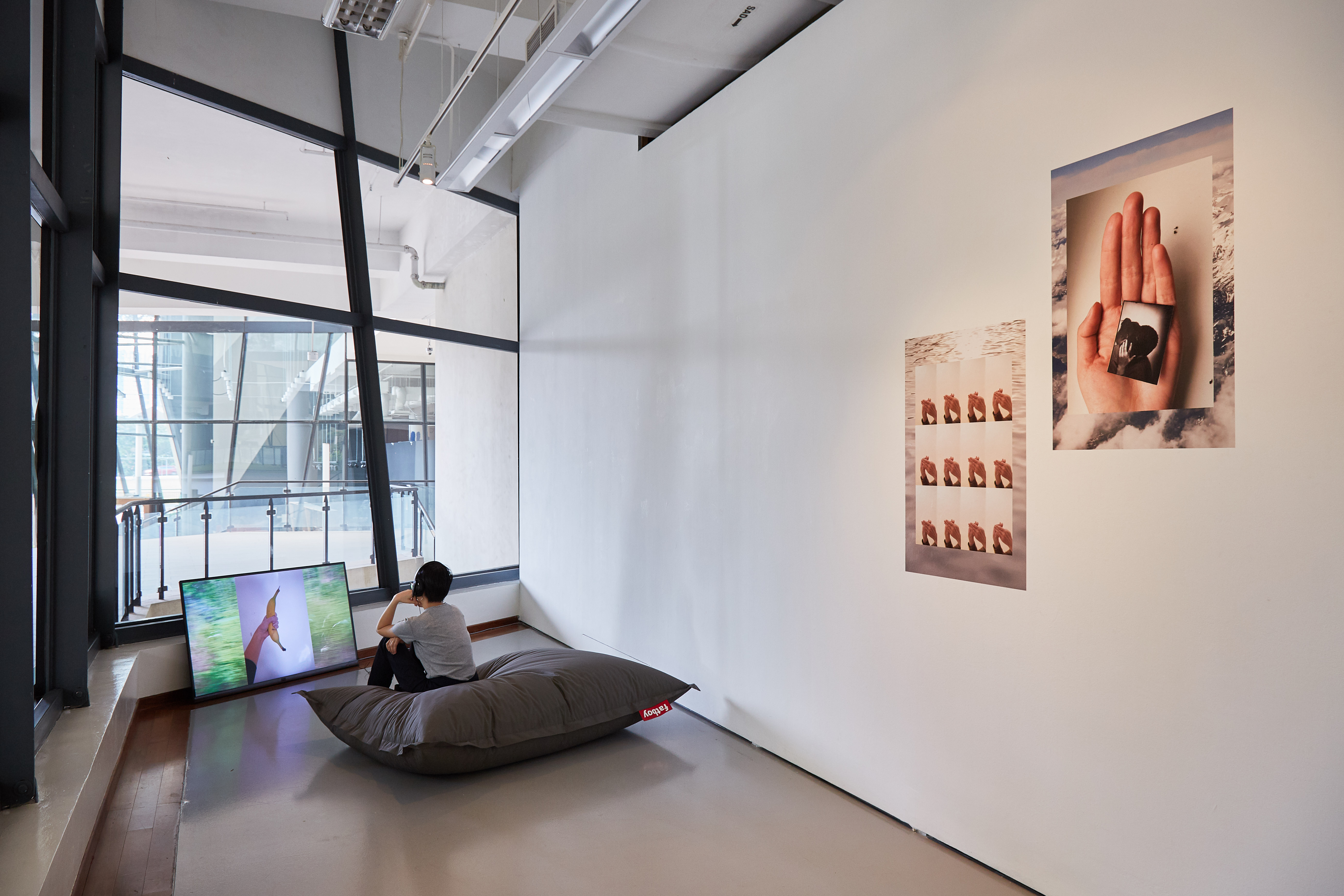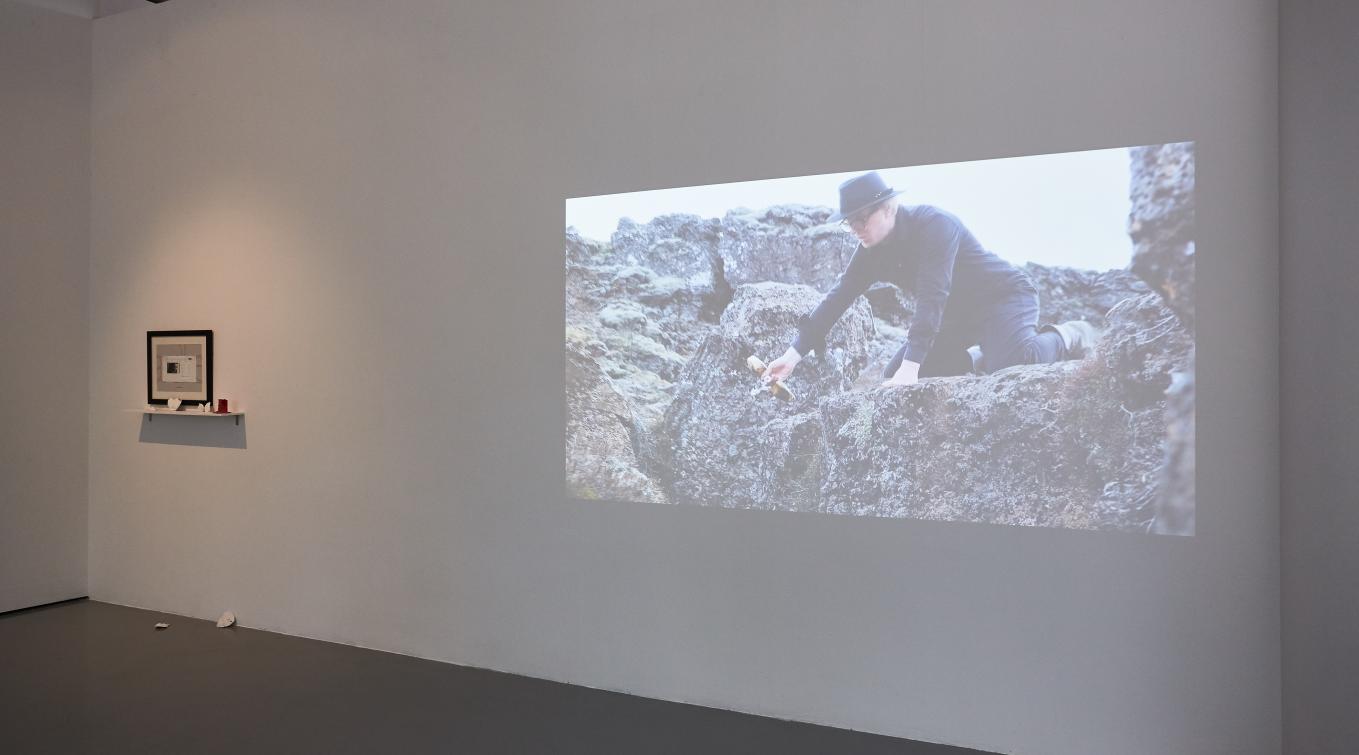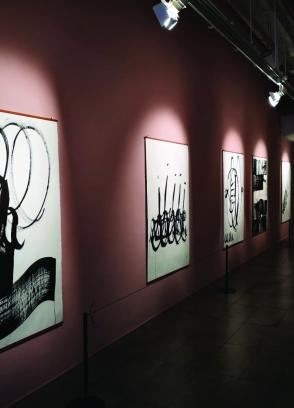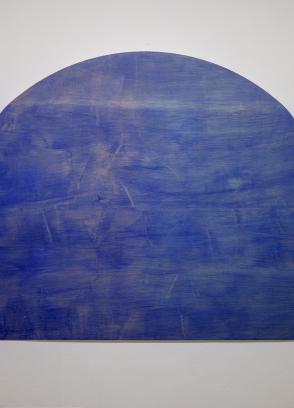Objects of Desire, 2019, in-situ installation view, Institute of Contemporary Arts Singapore, LASALLE College of the Arts. Images courtesy of Wong Jing Wei
by Soo Pei Chia, BA(Hons) Fine Arts Level 1 (2019)
Two things captured my attention as I entered the exhibition space: one, the tangibility of the silence that permeates it and two, the diversity of works which runs the gamut from prints, installations, to film and performance.
For Object of Desire, each artist had been invited to create a work that 'explores the values and hierarchies associated with 'being an object or image'' (curatorial statement). The curatorial arrangement of the works, described as engendering an 'interdependent constellation' would stimulate readings of the 'art objects' by their mere juxtapositions.
The title of the exhibition can be attributed to an essay A thing like you and me by artist-writer-filmmaker, Hito Steyerl. In the essay, she writes that our participation in images blurs the distinctions between subjects and objects and consequently, human subjectivity as well. Like images, what is human subjectivity has become more objectified. Images are seen as fragments of the real world: like any other 'a thing like you and me'. The extent of involvement of humans in the formation and operations of images was felt in the exhibition.
The art object is seen as an object which becomes germane through cultural institutions, where they are being recognised, documented and appropriated. More than simply just material objects, art objects are addressed as objects of desire, equipped with exceptional attention and connotation. The materiality of the art object allows us to create ideologies that reflect human ideals. The process of registering art objects with human desires becomes a mechanism for fortifying the notions of value that support current hierarchies, obfuscating the artists’ original intentions. The ideals behind our desires, is often more sinister than the loss of any actual object.
Object of Desire investigates the very notion of objects as subjects of desires and instigates the audience to question what validates objects and what is the value behind it.
The works curated produced were slightly disconcerting and beguiling, playing subtle games with what we see and what we want to see. Through an inquisitive inclination, the works portrayed the nature of publicness and intimacy, of hiding and exposing through the ambiguities of human desires. Through the suggestive ways, the works also serve as a reminder that art objects are seen as something more than material objects.
The works hint and suggest that art objects are viewed as objects of desire, enriched with hidden connotation. Because of how the exhibition was being installed, the way one group of works led into another possessed a clarity that revealed an intimate and quiet appeal.
Yet it is Guo Liang’s Figure series which opened the show, looking back at me, questioning my very presence in the room. How did I perceive this work?
Emblazoned across the wall is Guo Liang’s ephemeral and dactylic fabric series.
Photographs which were taken from the media were digitally printed and concealed with a layer of fabric gauze, giving it an ephemeral impression. In some of the works, pieces of wire and metal hook is attached to the surface of the fabric gauze. In this series of work, the painterly and textual surfaces act as surfaces for performing affect. The tension between the phenomenological and the psychological are played out in the process of staging congruences and slippages that occurs within material and language. Projections and disruptions may be used to map out territories of desire.
Intrigued by the sensual materiality of the work, I felt a strong urge to reach out and feel the texture of the work.
An object assumes a social role that is established through generations of repeated activity or use. Could an art object’s participation in this social construction of desires be something to consider? Could recognising the principle of objects allow us to see ourselves as things acting upon other things?
Perhaps we are at a brink of a realisation of a new, interactive materiality. Instead of mourning after the loss of the fantasy notion of objects, a potential future could be seen with it.





